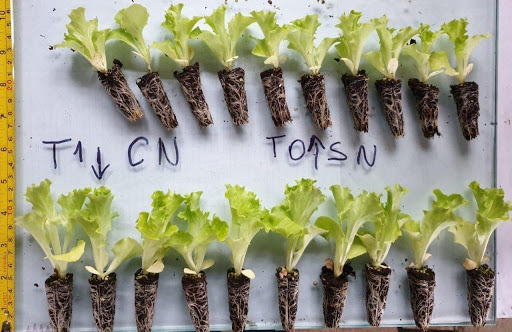A study led by staff in the Innovation & Development division of Kapicua, Moleaer’s distributor in Latin America, shows favorable results in Lollo Bionda lettuce crops, a popular type of lettuce in Latin America.
The study, performed in the city of San Fernando, assessed potential effects on lettuce plant growth and productivity.
For nine weeks, greenhouse lettuce plants grown in soil were given water super-saturated with nanobubbles, which increases dissolved oxygen levels and reduces harmful pathogens, algae, and biofilm. There was a significant increase in all growth variables, such as stem diameter and plant height, weight, and size, with more leaves produced in comparison to plants given conventional water.
In addition to boosting yield, the nanobubble-enriched water also increased productivity of the lettuce plants, reducing time to harvest and shrinking the seed-to harvest development cycle.
Effects in hydroponic lettuce
Another study at Kapicua involved lettuce grown in a hydroponic system. The Moleaer nanobubble generator was set to produce irrigation water with a dissolved oxygen (DO) concentration 100% higher than the water normally used in this system. Lettuce plants which received nanobubble-treated water demonstrated more growth and faster development.
According to Kapicua Commercial Director Benjamin Labbe, DO in the irrigation water at this facility would be increased by 200% to 300% with the permanent installation of a nanobubble-enriched irrigation system. “Moleaer technology generates stable super-high DO in irrigation water,” he says, “an investment which rapidly pays for itself in higher plant productivity and faster growth.”

Image: Hydroponic lettuce, a high-consumption crop for which productivity increases drive profitability and ROI. Top row – untreated. Bottom row – nanobubble treated


